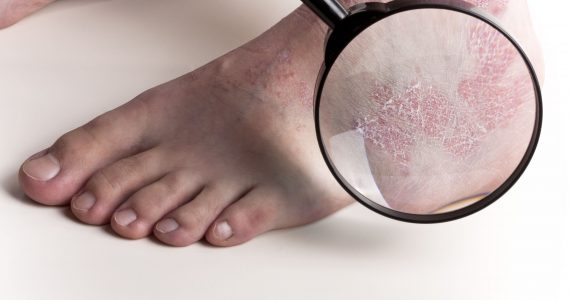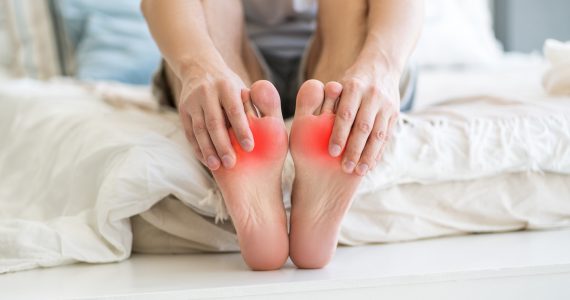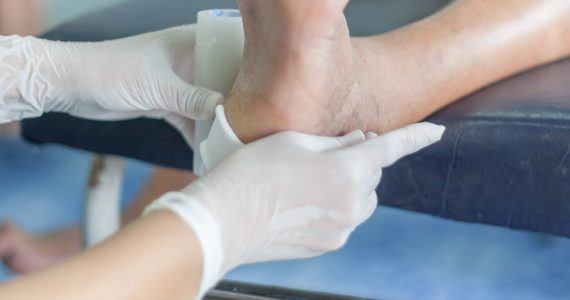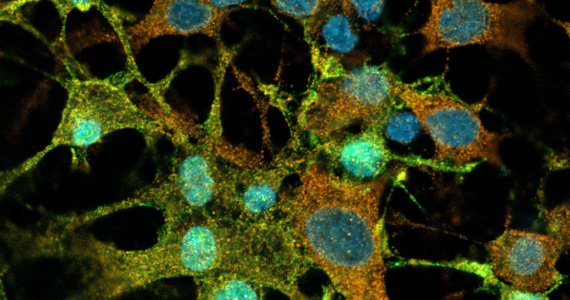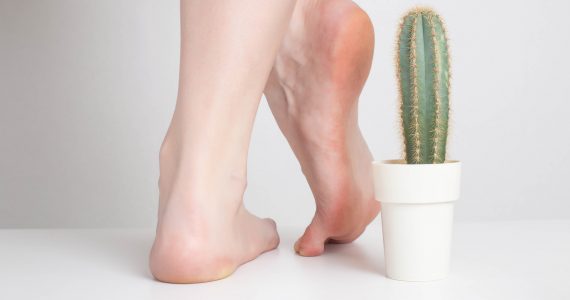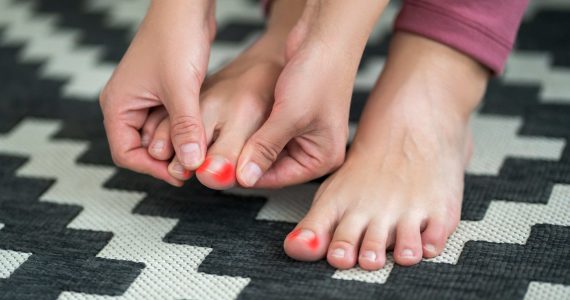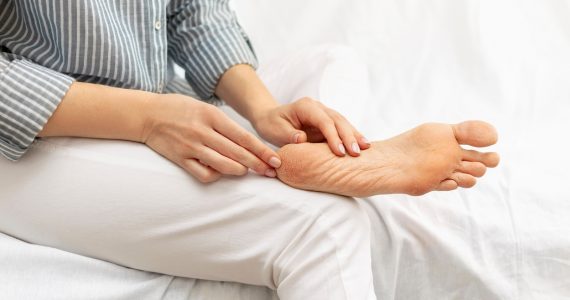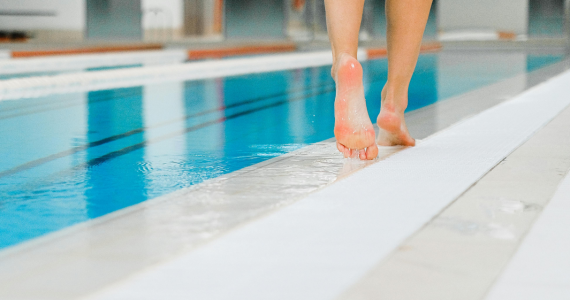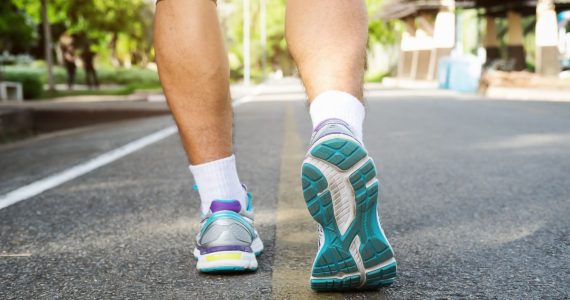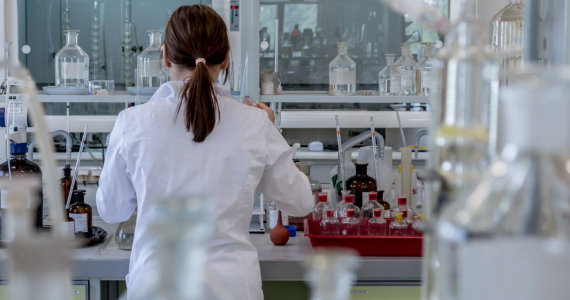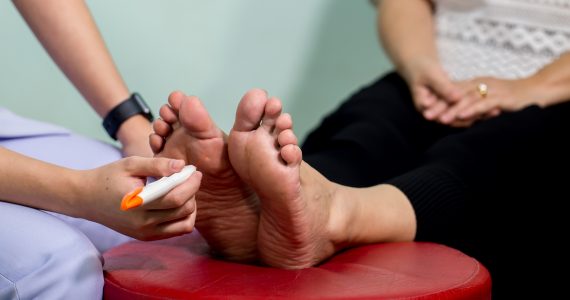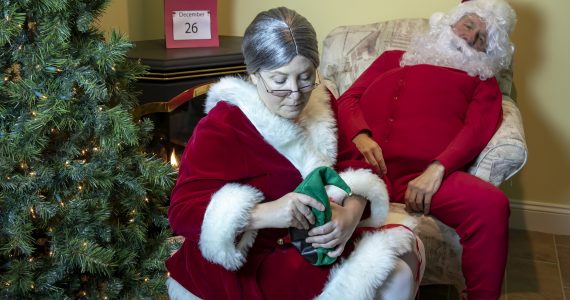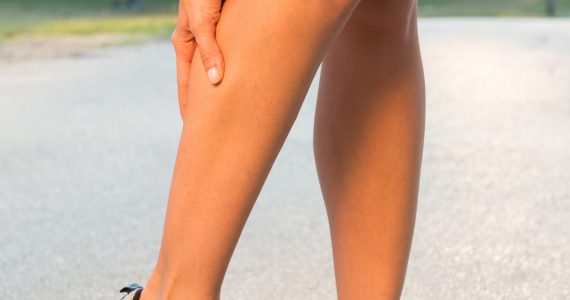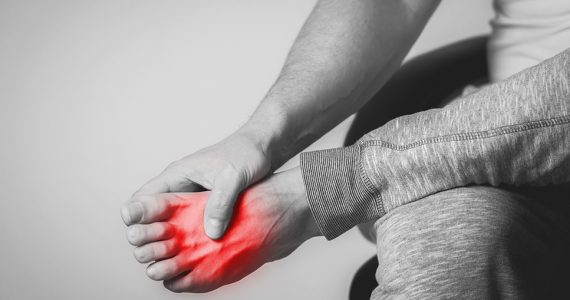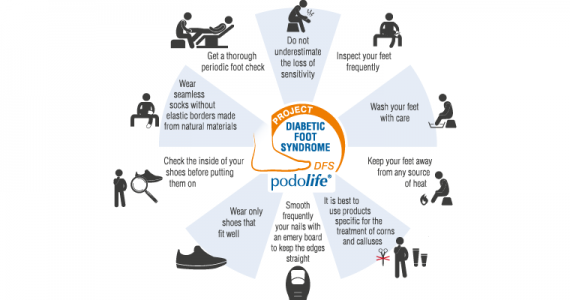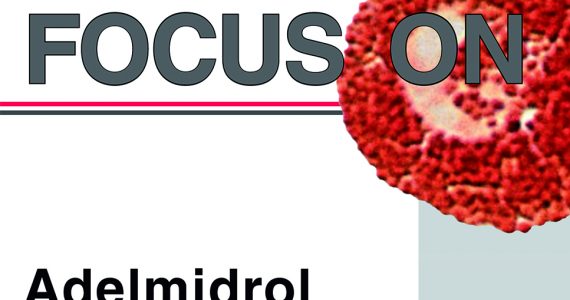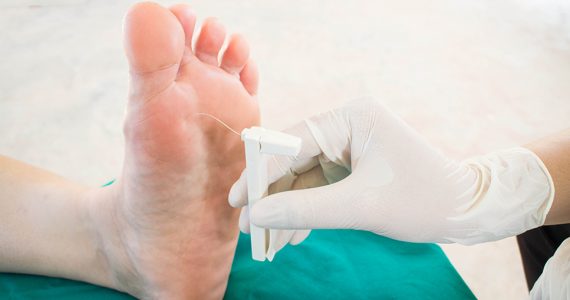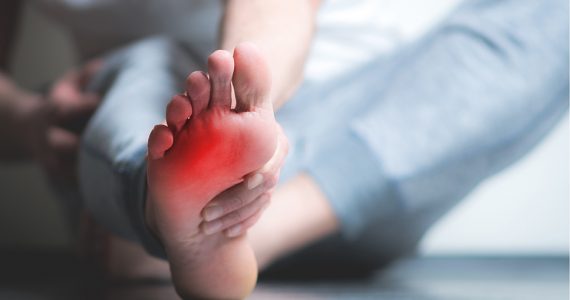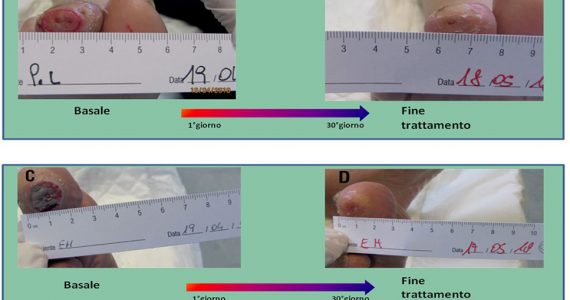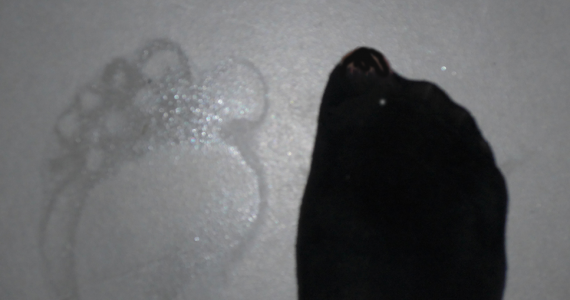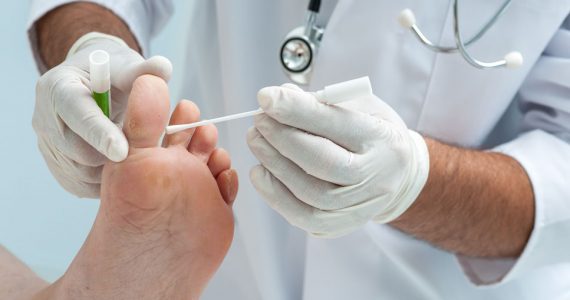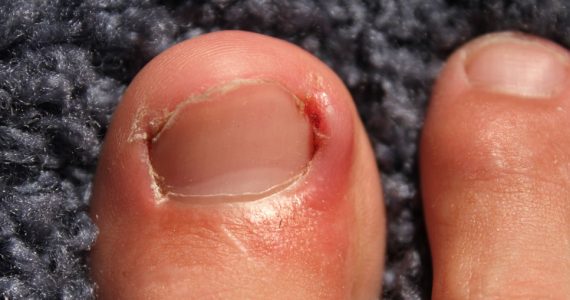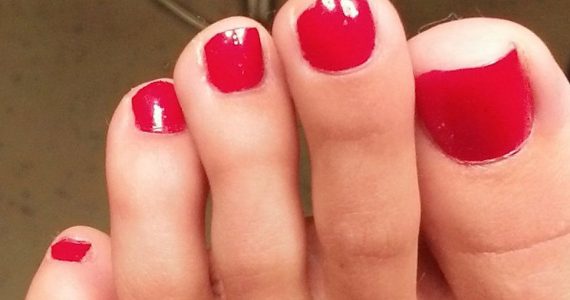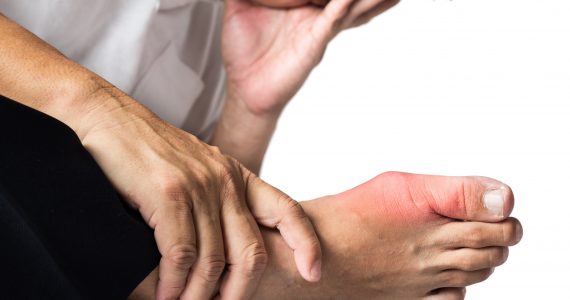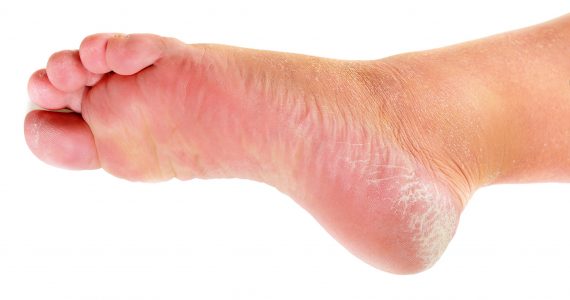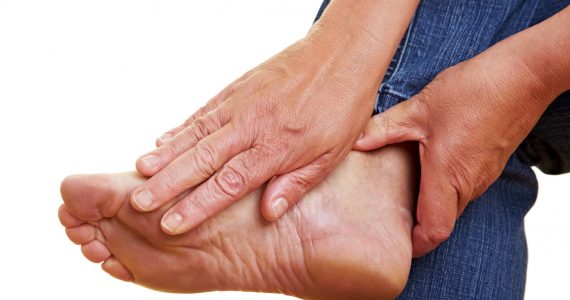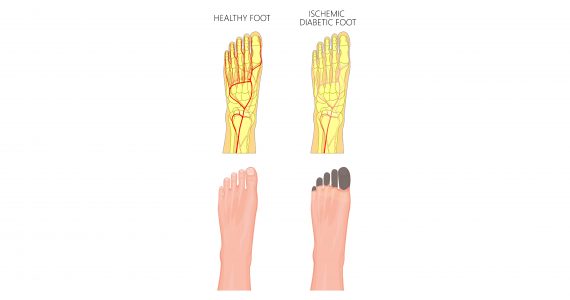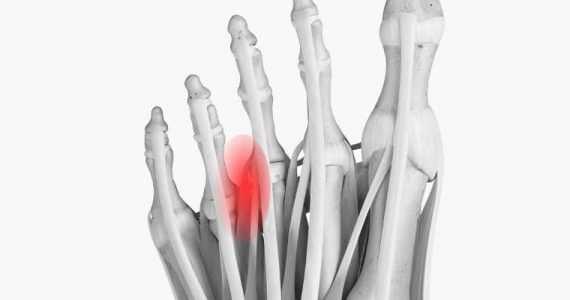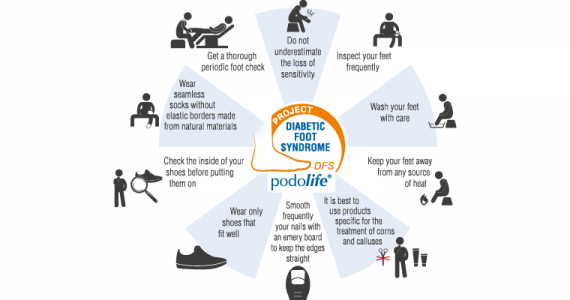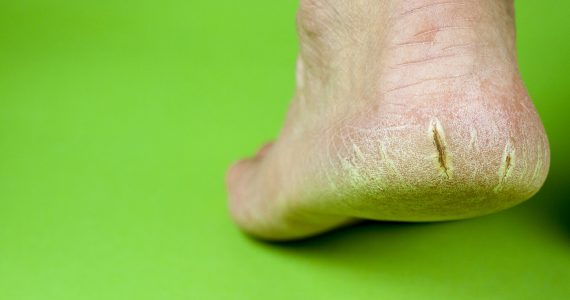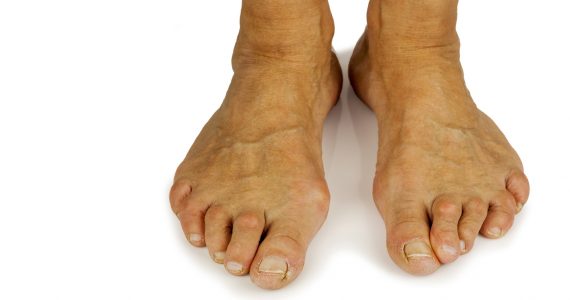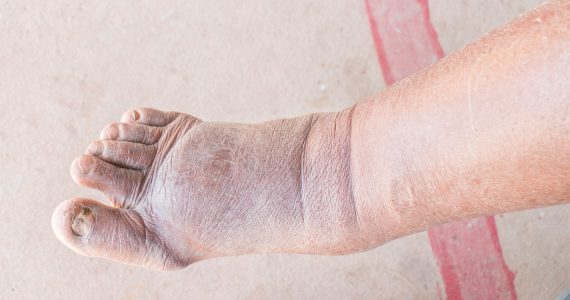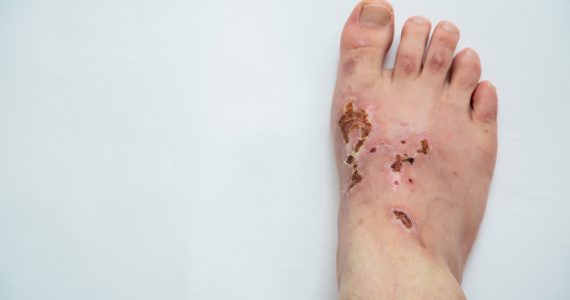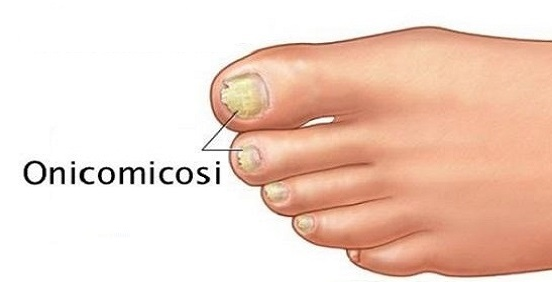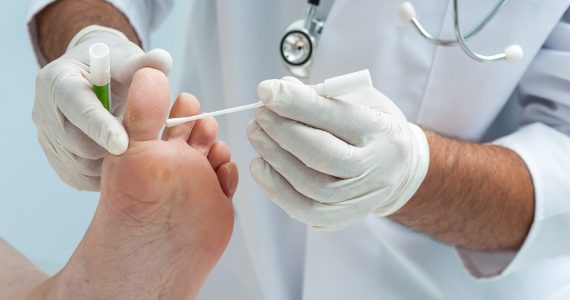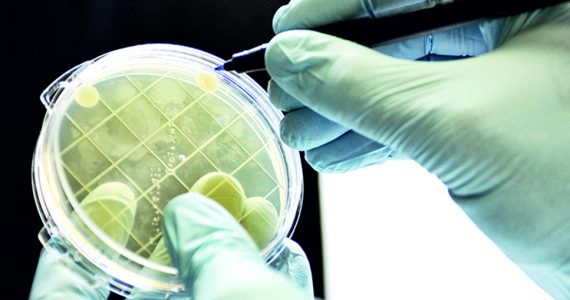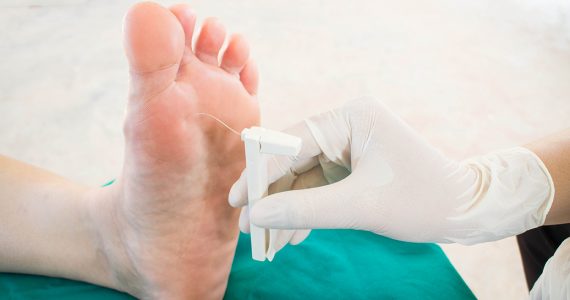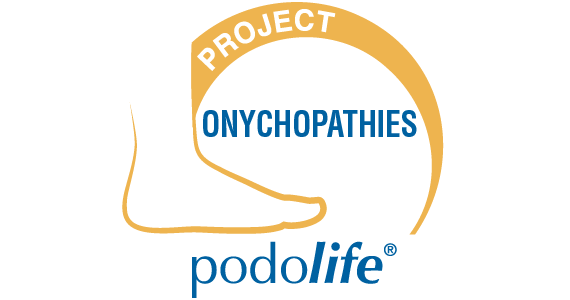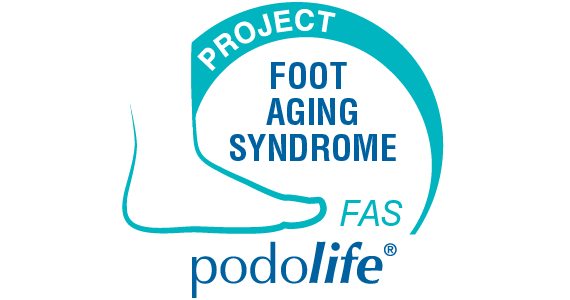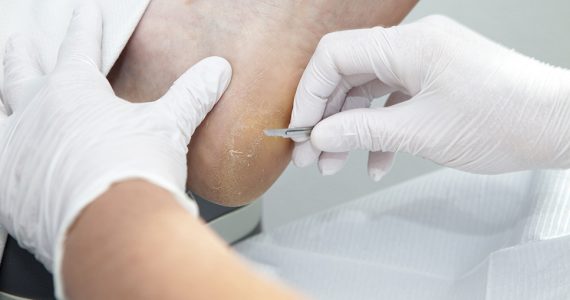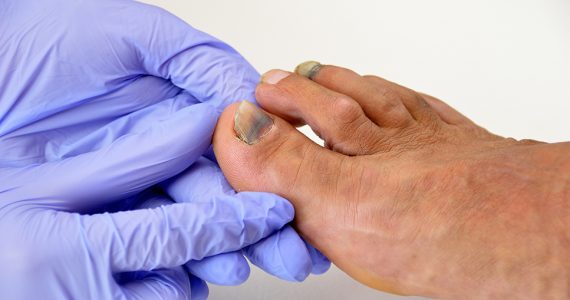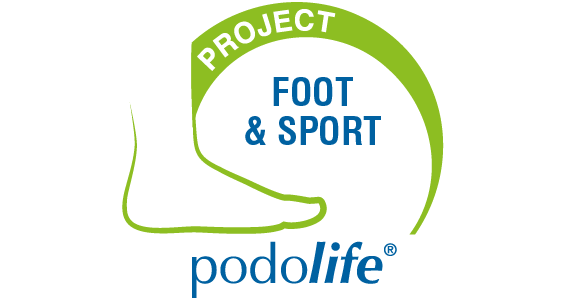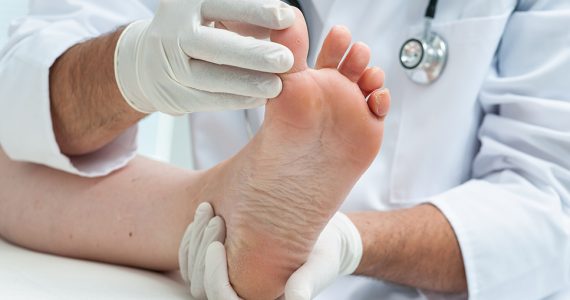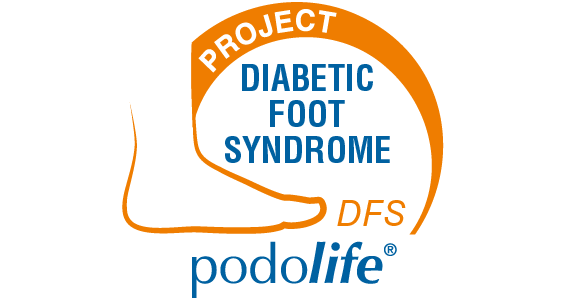Skin “in balance” thanks to moisturizing and anti-irritant formulas
Several factors contribute to the well-being of legs and feet skin: an equilibrium condition affecting the skin tissues health, appearance and functionality at the same time. From its most superficial layer – the epidermis – sophisticated biological processes help to regulate interactions with the external environment. Thus, skin is the body’s first shield protecting from […]
Read More →
How to prevent the most common winter foot disorders
Keeping feet healthy requires constant attention, even during the winter months, when the cold weather and the use of heavy, poorly breathable footwear can lead to alterations in the skin, nails and capillary tissues. However, some common winter foot disorders, such as calluses and chilblains, can be prevented and managed with simple daily practices. Any […]
Read More →
How to soothe foot skin irritation
Every day the foot is exposed to prolonged pressures and frictions, which make the skin vulnerable and subject to irritation of various nature and degree. Some pathological conditions can also alter the physiology of skin tissues, such as digital malformations (hallux valgus), bursitis (inflammation of the synovial sacs of the heel and plantar area), accidental […]
Read More →
How to protect the diabetic foot skin balance
The pathological development of “diabetic foot” can be effectively managed adopting some simple – but fundamental – daily preventive measures. In fact, diabetic foot is a chronic complication resulting from the nervous and circulatory dysfunctions typical of diabetes, often not easily recognized at its onset. Skin fragility and dryness, combined with reduced sensitivity in the […]
Read More →
Excellence in Neuroinflammation Award: Nominations NOW OPEN!
In order to encourage research on neuroinflammation by young scientists, Francesco della Valle Foundation announces the Call for Nominations for the 2025 Excellence in Neuroinflammation Award: a prize for the best 2024 publication by a young researcher, that has contributed significantly to the understanding and control of the mechanisms underlying neuroinflammation. Nominations will be accepted […]
Read More →
An effective way to manage foot peripheral neuropathy
Living with foot peripheral neuropathy means having to deal with symptoms such as pain, tingling, motor limitations and reduced sensitivity to thermal stimuli or pressure. The chronic-progressive nature of the pathology and the absence of specific therapies make it essential to identify and early manage the underlying cause of nerve suffering. Controlling sensory symptoms is […]
Read More →
How to prevent inflammatory and infectious complications of onychocryptosis or ingrown toenail
The complexity of the ungual apparatus makes us understand how even simple daily actions can alter its balance and morphofunctional characteristics: this is exactly what happens with the pathogenesis of onychocryptosis (ingrown toenail). In this fairly common process, a portion of the nail plate (the hardest part commonly called “nail”) penetrates into the adjacent soft […]
Read More →
Dry and sensitive skin: the key role of the lipid component
Foot skin dryness or xerosis is associated with the alteration of the hydrolipidic film that normally protects skin from the surrounding environment. A variety of physiological and external factors can lead to this condition, acting in combination or separately: aging, hormonal changes, the use of aggressive detergents, the intake of certain drugs (e.g. chemotherapeutical ones) […]
Read More →
Active protection against foot and nail mycosis
Daily prevention is essential to counteract fungal infections of foot skin (dermatophytosis) and nail skin (onychomycosis), especially for patients with immune system dysfunction such as diabetes related. Careful cleansing, performed with specific products, protects against recurrent and more serious bacterial infections, which are very difficult to treat. Dermatophytosis initially involves erythema, itching and skin flaking […]
Read More →
A new remedy to regulate foot sweating
Hyperhidrosis, or chronic excessive sweating, is a functional disorder with important repercussions on the patient’s psychophysical health. It is often perceived and treated as a mere “aesthetic” problem, without considering the biological mechanisms that regulate sweating. The possible complications related to hyperhidrosis, however, require a specific approach that aims not only to ensure the effectiveness […]
Read More →
Adelmidrol for topical use, a step forward in podiatry
One of the most important impulses to the development of podological medical discipline comes from scientific research on neuro-inflammatory processes. Today the molecule of choice for the control of various foot pathologies is Adelmidrol, an aliamide able to enhance the physiological mechanisms of protection of the skin tissues and, thus, limit the neuro-inflammatory response resulting […]
Read More →
Plantar bromhidrosis, can interfere with our relationships
Sweating is a complex biological phenomenon, extraordinarily important for keeping body temperature within physiological limits, is finely controlled at peripheral and central level. The activity of the sweat glands – eccrine and apocrine – is coordinated by the district neuro-endocrine system, which is in turn regulated by the mast cell, a dermal-epidermal tissue-resident cell, with […]
Read More →
Diabetic neuropathy: the Podiatrist’s help in diagnosing
Distal Diabetic neuropathy is a common complication of diabetes, often chronic and disabling but frequently underestimated and inadequately treated. This short article discusses this emerging problem (affecting 1 in 3 people suffering with diabetes), providing indications on the diagnostic approach and on the latest generation of topical molecules that can be used to restore the […]
Read More →
Christmas period: tired and swollen legs. Natural remedies to help
It’s not only Santa Claus’s feet that feel the effects … The Christmas period is a very busy time for many people. In the sales sector, on industrial production lines, in bars and restaurants or in hairdressing salons, but also in hospitals or doctors’ surgeries, over half the employees spend many hours on their feet […]
Read More →
Managing Delayed Onset Muscle Soreness “nature’s way”
In professional and non-professional sports activities, physical exercise can lead to Delayed Onset Muscle Soreness or DOMS. The level of pain experienced ranges from slight muscle discomfort to a maximum muscle ache enough to limit performance. The onset occurs after around 8–24 hours, with a maximum peak at around 48–96 hours after the exercise. Normal […]
Read More →
Foot Hyperalgesia : what is it, and how to manage it
When we talk about hyperalgesic states of the foot we refer to a pain frequently localized in specific foot (metatarsal bones, foot sole and foot neck, etc.) or ankle structures. There are several trigger factors for the hyperalgesic states in the foot: dysmetabolic disorders (e.g. diabetes); foot nerves diseases (e.g. due to drugs, autoimmune conditions, […]
Read More →
Diabetic foot: risks and prevention
Among the diabetes complications, we found the diabetic foot, a severe disabling chronic condition, sustained by blood vessels damage (driven by oxidative stress) and by nerves injury (diabetic neuropathy ) affecting lower limbs. The sensory deficit typical in case of diabetic foot (not feeling pain or perceiving tactile stimuli) is frequently associated with a skin […]
Read More →
ALIAmides: molecules of new generation in the wise hands of Podiatrists
ALIAmides have long been known in dermatology. These are natural molecules, capable of controlling inflammation, itching and pain and can now boast confirmation both of their mechanism of action and clinical efficacy. In fact, specific scientific analysis, have shown that these molecules – for systemic or topical administration, reduce significantly skin and mucosa mast cells […]
Read More →
Diabetic foot management with molecules of new generation
The diabetic foot syndrome today is considered as a disorder definitely disabling, and represents the most evident symptom of a widespread dysmetabolic disease that involves not only nerves but also arteries and veins in lower limbs. At the base of the diabetic foot symptoms and tissues alterations (pain, tingling, itching, loss of nerve sensitivity and […]
Read More →
Metatarsalgia: what is it and how manage it
The general term metatarsalgia is used to denote a pain in the metatarsal region, in most cases it is referred in the plantar area, and is caused by an excessive load over one or more metatarsal joints. Among the most common causes of metatarsalgia are found: Transverse plane deformity of the foot; Joint diseases of […]
Read More →
Care for the diabetic foot ulceration: the skin reepithelialization importance
The diabetic foot ulceration iso one of the main complications of diabetes. It is estimated that around the 30 % of diabetics is destined to develop a foot ulceration over a lifetime, with the risk of amputation of part or whole foot. The challenge, for this kind of injury, consists in reaching an optimal skin […]
Read More →
Foot sweating (hyperhidrosis): complications and remedies
In the Podological field, hyperhidrosis is an excessive foot sweating causing unpleasant odor (bromhidrosis) despite an accurate hygiene. Foot hyperhidrosis carries a high risk of secondary complications like: fungal infections (mycosis), skin maceration, contact dermatitis, ulcerations due to a continuous humidity on the foot sole in patients with fragile skin (e.g. diabetics). If sweat keeps […]
Read More →
Novel remedies for nail mycoses
Skin, mucosa and nail mycoses are frequent problems (frequently not dangerous) caused by fungus (mycetes) and transmitted to humans from the environment or spread from person to person. For the treatment of mycoses several pharmaceutical or surgical remedies are available. Anyhow, fungal infection might become particularly dangerous in “fragile” individuals with: metabolic disorders (e.g. diabetes) […]
Read More →
Ingrown toenail: what is it and which remedies are available
Ingrown nail or onicocriptosis is one of the most common nail disorders. The causing factors for an excessive mechanical stimulation exerted on the periungual tissues (a cause for inflammation, fibrosis and epidermal injury), excessive sweating with maceration in the nail groove, fungal infections affecting the nail plate, biomechanical alterations contributing to the onset of the […]
Read More →
Tendon inflammations
What are tendon inflammations? Tendons are bands of fibrous tissue that connect the muscles to the bones, thereby allowing the contractile apparatus to function properly. These essential fibrous structures with a pearly white colour transform the force created by muscular contraction into movement. Although they have a robust structure and are able to take significant loads, […]
Read More →
5° varus finger
The 5th finger varus is a forefoot deformity characterized by the hyperextension of the metatarsophalangeal joint at the 5th finger of the foot, with an inward deviation. In fact, the 5th foot finger is bent to the other fingers, and its lateral margin shows an annoying swelling hindering walking, wearing shoes or even a simple […]
Read More →
Pathologies of the big toe
The most common pathologies that can affect the big toe are: Hallux valgus Hallux rigidus What is Hallux valgus? Hallux valgus is a deformity that affects the big toe and manifests itself in the form of an inward deviation of the metatarsal bone that leaves it at an abnormal angle. What are the symptoms Hallux […]
Read More →
Severe skin dryness
What is Severe skin dryness? As we get older, the skin and its appendages undergo structural, morphological and functional modifications due to aging, in itself physiological. Prolonged exposure to UV rays (photoaging) also causes changes to the skin, which especially in the elderly lead to excessive dysepithelialization and moderate-severe dryness. Natural skin aging brings a […]
Read More →
Onycopathies: small dictionary on nail problems
Have you ever wondered if saying “broken nail” is the correct term? Or what is the correct name of the ingrown nail? With this small glossary, every nail “problem” has its name (to learn about all the pathologies, read the in-depth “Nail disorders”). Let’s see the words of the nails together! Glossary on nail […]
Read More →
Plantar fasciitis
What is plantar fasciitis? Plantar fasciitis is an inflammation of the plantar fascia, or rather the flat band of fibrous connective tissue that stretches from the medial region of the calcaneus (heel bone) to the root of the toes. This structure is divided into three parts (medial, central and lateral) and its job is to transfer […]
Read More →
Neuropathic and ischaemic foot
Neuropathy and diabetic foot – Neuropathic foot Diabetic neuropathy causes the peripheral nerves to suffer (neuroinflammation) followed by a reduction in sensitivity in the event of any cut, callus or injury in the lower limbs; this causes the patient to act, move and walk as if there were no damage. In this way, correct healing of […]
Read More →
Morton’s neuroma
What is Morton’s neuroma? Morton’s neuroma consists of an enlargement of one of the nerves located between the toes. The chronic irritation that causes the neuroma takes its name from the 19th century American surgeon Thomas George Morton who was the first to describe this painful condition. If neglected, Morton’s neuroma can lead to the […]
Read More →
Prevention of diabetic foot – Useful advice
Like most other pathologies, for diabetic foot too the best “cure” is prevention. An approach based on prevention limits the phenomena responsible for skin ulcers and thereby reduces the need for amputations. Where sensitive neuropathy is present, frequent checks on the foot are recommended in such a way as to monitor any symptoms of this […]
Read More →
Epidermal crack
What is epidermal crack? Cracked feet and the formation of so called fissures on the heels or soles of the feet, are common conditions that affect men and women indiscriminately, but they develop more frequently among the elderly. As we age, the protective fat that makes up part of the sole of the foot becomes […]
Read More →
Hyperalgesic conditions or hypersensitivity to pain
What are hyperalgesic conditions or hypersensitivity to pain? Hyperalgesia (the pathological increase of sensitivity to painful stimuli) is commonly experienced following a series of primary pathologies (herpes zoster, diabetes, superficial peripheral neuropathies associated with inflammatory joint pathologies, various kinds of trauma and algodystrophy) which to varying degrees affect the quality of life of the population […]
Read More →
Chronic Venous Insufficiency or Chronic Venous Disease
What is Chronic Venous Insufficiency or Chronic Venous Disease? Chronic venous disease is a condition that makes it difficult for the blood to return to the heart. In the lower limbs this causes an increase in pressure in the capillaries resulting in oedemas, generalised hypoxia and lactic acidaemia (too much lactic acid in the blood). […]
Read More →
Allergic contact dermatitis
What is allergic contact dermatitis? Allergic contact dermatitis is a skin reaction caused by natural allergens or chemicals, it manifests itself in the form of inflammation and reddening of the skin and itching. A typical sign of allergic dermatitis is the formation of blisters full of blood serum around the inflamed skin. If the blisters […]
Read More →
Types of onychomycosis
So-called nail fungus (onychomycosis) generally takes five forms: Proximal subungual onychomycosis Distal subungual onychomycosis Candidal onychomycosis White superficial onychomycosis Total dystrophic onychomycosis Distal subungual onychomycosis Affects the fingernails and toenails; usually caused by the pathogenic agent Trichophyton rubrum, it appears in the form of subungual hyperkeratosis (thickening of the skin), onycholysis (detachment of the nail […]
Read More →
Mycoses
MYCOSES are infections caused by mycetes, more commonly known as fungi, that can colonise: skin, hair, nails (onychomycosis) and the genital areas, e.g. infection by Candida albicans. It is important to note that some mycetes can be found in normal microbial flora known as cutaneous microbiome. Cutaneous flora is made up of the microorganisms that […]
Read More →
Haglund’s deformity
What is Haglund’s deformity? Haglund’s deformity is an inflammation of the heel of the foot featuring an abnormal outgrowth of the back of the calcaneus (heel bone) in the region of the Achille’s heel. If footwear is used that has a stiff back edge against the heel, painful inflammation can swell and cause a fibrous callus. […]
Read More →
Microbial contaminations in Podiatric Medicine: a problem to be solved
Podolife attended the 4th World Congress for Podology and Podiatry, held in Naples on April 27-29 2018, and presented a workshop entitled “The microbiological risk in the Podiatrist’s clinic”. The microbiological contaminations are a serious issue for the Podiatric medical practice. Being able to control the microbiological risk represents a therapeutic advantage that allows to […]
Read More →
Treatment and prevention of diabetic foot
The specific therapeutic approach to treating diabetes, and associated comorbidities (e.g. alteration to the tissues in the feet), is multidisciplinary as the diagnosis requires the assessment of more than one healthcare specialist (Diabetologist, Podiatrist, Surgeon). Patients suffering from diabetes should follow all the instructions given by the Specialist to put into practice an effective prevention program […]
Read More →
Nails and onychomycoses
The nail The nail is the thin and slightly convex four-sided plate located on the ends of our fingers and toes. Comprised mainly of keratin (and lower percentages of fats, amino acids, water, vitamins and minerals), its reddish colour is due to the colour of the blood that transpires from the skin, but if it […]
Read More →
Foot Aging Syndrome
As time has progressed, science and technology have made it possible for all humankind to live longer. The current world situation, especially in the western hemisphere shows an increase in the population over the age of 60 years. Data processed by the UN highlight the need to know, control and prevent pathologies that affect the […]
Read More →
Hyperkeratosis
What is hyperkeratosis? Hyperkeratosis is an alteration of the skin and consists of a thickening of the outermost layer of the epidermis which is subject to a build-up of epithelial cells or keratinocytes. Keratinocytes form on the basal layer of the epidermis and are expelled from the surface of the skin once their 40-day cycle […]
Read More →
Pathologies of the nails
The most common pathologies affecting the nails are: ANONYCHIA Anonychia is the absence of nails on the fingers or toes and can be either congenital (or more rarely linked to growth disorders) or acquired (as a result of psoriasis). This pathology may occur together with a variation in the natural colour of the nail (chromonychia). The cause […]
Read More →
Sportspeople’s feet
People who regularly engage in sports put greater stress on one of the most important parts of their anatomy during physical activity: the foot. The intensity and frequency of the activity can cause the foot to undergo traumas or will leave it not in the best condition; it is therefore useful to know that especially […]
Read More →
Athlete’s foot
What is athlete’s foot? Athlete’s foot (Tinea Pedis or ringworm of the foot) is a contagious mycotic infection caused by a dermatophyte fungus: Tinea Pedis. This type of foot fungus is very common among athletes and sportspeople that frequent hot, humid and public places. Transmission of the fungus in question takes place: Directly: by coming […]
Read More →
The feet of diabetic patients
Diabetes is a condition in which levels of glucose (sugar) in the blood are too high due to a biological deficiency of insulin, the hormone that controls glycaemia in the blood and which is produced by the pancreas. The main problems for diabetics today relate to the chronic complications associated with this pathology. Among the […]
Read More →

